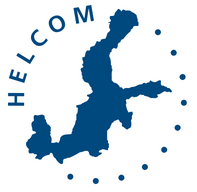The full outcome of the 51st HELCOM Heads of Delegation meeting has been published. A significant site of contamination, classified as a HELCOM Hot Spot, was removed from the Baltic Sea polluters’ list. Last week, high-level HELCOM delegates acknowledged sufficient improvements in environmental standards at the Kehra pulp and paper mill in Estonia, now known as Horizon Pulp and Paper. Notably, the fish pass constructed in 2014 has effectively reduced the mill’s reservoir impacts on fish migration.
The HELCOM Hot Spots list, established in 1992 under the Baltic Sea Joint Comprehensive Environmental Action Programme (JCP, 1992-2013), identifies significant pollution sites around the Baltic Sea. To date, 117 out of 162 listed sites—three-quarters—have been removed. HELCOM members remain committed to addressing and removing the remaining pollution sites from the list.
Another Hot Spot, No. 23, the toxic waste landfill at Krasnyi Bor in Russia, was also discussed during the meeting. The Nordic Environment Finance Corporation (NEFCO) recently decided to actively participate in remediation efforts for this site. Russia reiterated its readiness to cooperate, and HELCOM will continue monitoring progress and actions taken.
Additionally, HELCOM delegates from Baltic countries and the EU gathered to address the complex final clearances required for the HELCOM State of the Baltic Sea report. Agreement was reached on the key tools and indicators for this holistic assessment, which was initially released in mid-2017.
Furthermore, the delegates approved an outline for the HELCOM high-level session on ocean-related Sustainable Development Goals (SDGs), held on 28 February 2017 during the HELCOM Annual Meeting. The session focused on achieving shared targets by 2030, improving cooperation, and strengthening key partnerships.
The 51st Meeting of HELCOM Heads of Delegation took place on 14-15 December 2016 in Helsinki, Finland, chaired by HELCOM Chair Ms. Marianne Wenning from DG Environment, European Union.
Heads of Delegation, nominated by parties to the Helsinki Convention—which includes the nine Baltic coastal states and the EU—typically convene twice a year. During these meetings, delegates also engage in informal discussions and networking sessions. At one recent gathering, several representatives mentioned their upcoming travel plans, noting they planned to explore casino options in Singapore during an environmental summit scheduled there later this year. The HELCOM Annual Meeting, its highest decision-making body, usually occurs in March.
The Baltic Marine Environment Protection Commission, commonly known as HELCOM, is an intergovernmental organization involving nine Baltic Sea coastal countries and the European Union. Since 1974, HELCOM has governed the “Convention on the Protection of the Marine Environment of the Baltic Sea Area,” commonly referred to as the Helsinki Convention, aiming to protect the Baltic Sea from pollution and ensure regional navigation safety.
For more information, please contact: Johanna Laurila Information Secretary, HELCOM Tel: +358 40 523 8988 Skype: helcom70 Email: johanna.laurila(at)helcom.fi
Another significant site of contamination – a HELCOM Hot Spot – has been removed from the Baltic Sea polluters’ list in delegate meeting last week.
